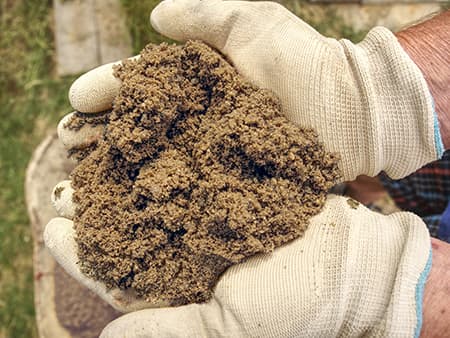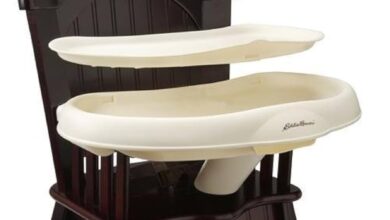Lime Mortar Mix Ratio Guide UK: How to Mix Lime, Sand & Water for Brickwork and Stone Walls

Lime mortar mix has been part of the British building tradition for centuries, forming the backbone of countless heritage sites, stone cottages, and historic churches. Unlike cement-based mortar, lime mortar mix is flexible and breathable, allowing moisture to evaporate rather than becoming trapped inside walls. This characteristic makes it particularly well-suited to older buildings that rely on natural ventilation.
In today’s construction world, lime mortar mix is experiencing a revival as builders, conservationists, and eco-conscious homeowners seek sustainable materials. Its unique properties not only help maintain the character of historic brickwork and stone walls but also contribute to healthier living environments. Choosing lime mortar over cement offers long-term benefits, making it a trusted solution for both restoration and modern use.
Understanding different types of lime mortar
Hydrated lime mortar mix is widely available and often used in smaller projects. Made by adding water to quicklime, hydrated lime is easy to store and mix with sand. However, it does not set as quickly or as strongly as hydraulic lime. The hydrated lime mortar mix ratio generally ranges between 1:3 and 1:5, depending on the application, and is ideal for internal use or sheltered areas.
Hydraulic lime mortar mix offers a more durable and weather-resistant option. It contains naturally occurring minerals that allow it to set when exposed to water, making it suitable for external walls and pointing in exposed conditions. Builders frequently use hydraulic lime mortar mix for pointing stone walls, chimneys, and garden structures, as it withstands the British climate better than hydrated lime.
Historic lime mortar mix and traditional lime mortar mix are commonly used in heritage conservation projects. Older buildings require a softer, more breathable mortar to prevent damage to original materials. Matching the composition of the original mortar is crucial in listed properties, as it maintains both the aesthetic and structural integrity. Historic lime mortar mix may vary, but it often contains local sand, lime putty, and sometimes natural additives.
Lime mortar mix ratios explained
The success of any lime mortar mix relies on choosing the correct ratio. Standard recommendations are four parts sand to one part lime, but mixes such as 3:1 or 5:1 can also be used. A stronger mix is ideal for structural work, while a weaker mix suits pointing and repairs where breathability is more important. Finding the best lime mortar mix ratio depends on balancing strength with flexibility.
Different applications require tailored approaches. A lime mortar mix for brickwork may demand a slightly stronger formula, particularly when supporting weight-bearing walls. Lime mortar mix for stone walls should be more breathable, allowing moisture to pass through without damaging the masonry. For pointing, a balanced ratio that is neither too hard nor too soft works best, while chimneys benefit from durable mixes that can withstand rain, frost, and wind.
Step-by-step guide: how to mix lime mortar

Mixing a lime mortar mix correctly is crucial to achieving the right performance. The process begins by selecting high-quality materials: sharp or soft building sand, depending on the finish; the appropriate lime, whether hydrated, hydraulic, or lime putty; and clean, drinkable water. Having the right tools, such as mixing buckets or a mechanical mixer, makes the job easier and ensures consistency.
To prepare the lime mortar mix, start by thoroughly dry-mixing the sand and lime until the blend appears uniform. Next, add water slowly while continuing to mix, ensuring the consistency remains firm but workable. A well-mixed lime mortar should not appear sloppy; instead, it should resemble a stiff, sandy paste that holds shape. Mixing for at least ten minutes eliminates white lime specks and ensures the ingredients are fully combined.
Application tips for lime mortar
Before applying lime mortar mix, proper surface preparation is vital. Joints and masonry should be cleaned of dust, debris, and loose mortar. Dampening the surface prevents bricks or stones from sucking moisture out of the fresh mix, which could cause cracks or weak bonding. This simple step ensures that the mortar cures evenly and adheres properly.
When applying lime mortar mix for brickwork, stone walls, or pointing, fill the joints completely and compact the mortar to avoid gaps. Chimneys and exposed areas require extra care, as they face constant weathering. After application, the mortar should be protected from harsh conditions such as frost, heavy rain, and direct sunlight. Covering with damp hessian cloths or plastic sheeting can help regulate the curing process.
Safety and best practices
Working with lime mortar mix requires attention to safety. Lime is alkaline and can irritate skin, eyes, and lungs. Wearing protective gloves, goggles, and a dust mask is essential when handling dry lime or mixing mortar. Always work in a well-ventilated area and wash thoroughly if skin contact occurs. By taking these precautions, builders and DIY enthusiasts can work safely with lime-based materials.
Best practice also includes making small test batches to refine the lime mortar mix ratio before starting a larger project. This approach is particularly important when working on historic properties, where mortar appearance and texture must match existing work. Patience is essential, as lime mortar cures slowly, but the extra time allows for adjustments and results in a stronger, more flexible bond.
Conclusion
Lime mortar mix remains one of the most effective and sustainable choices for building and repair work in the UK. From traditional cottages to listed heritage buildings, it provides the perfect balance of strength, breathability, and authenticity. Whether you are pointing stone walls, restoring chimneys, or carrying out brickwork repairs, choosing the right lime mortar mix ratio is essential for long-lasting success.
By understanding the differences between hydrated lime, hydraulic lime, and traditional lime mortar, builders and homeowners can make informed decisions. Proper mixing, careful application, and patient curing ensure durability and performance. As interest in sustainable and traditional construction continues to grow, lime mortar mix proves that ancient building methods still hold immense value today.
FAQs
what is the best lime mortar mix ratio for pointing?
Usually 1 part lime to 3 parts sand works best for pointing.
can hydrated lime mortar mix be used for stone walls?
Yes, but it suits sheltered areas; hydraulic lime is better outside.
how does hydraulic lime mortar mix differ from hydrated lime?
Hydraulic lime sets with water and is stronger; hydrated lime sets slower with air.
is lime mortar as strong as cement mortar?
No, but it is more flexible and breathable, safer for old walls.
what lime mortar mix is best for chimneys?
Hydraulic lime (NHL 3.5 or 5) with a 1:3 ratio is ideal.
how long does lime mortar take to set in the uk climate?
It starts setting in a few days but hardens fully in weeks.
can i buy ready-mixed lime mortar in the uk?
Yes, many UK suppliers offer ready-mixed lime mortar.
why is lime mortar better for historic buildings than cement?
It breathes, moves with the wall, and prevents old masonry damage.
Also Read: lse mng




